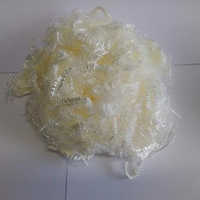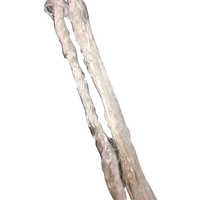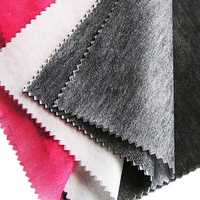Acrylic Fabric
(360 products)
Explore More Categories
As Per Required Acrylic Staple Fibre
Price: 2 USD ($) (Approx.)/Kilograms
MOQ - 2000 Kilograms/Kilograms
Material - 100% Acrylic
Fabric Texture - Other
Fabric Type - other
6 Years
Business Type: Manufacturer | Exporter
EAST ASIA TEXTILE TECHNOLOGY LTD.
100% Polyester 306-Wy09093-Milky Coated Fabric For Horse Rugs And Jacket Cover
Price Trend: 1.00 - 2.00 USD ($) (Approx.)/Yard
MOQ - 1000 Yard/Yards
Material - 100% Polyester
Polyester Texture - Woven
Style - Jacquard
7 Years
Business Type: Manufacturer | Exporter
WIN YANG TEXTILE CO., LTD
Made in India
Industrial Recycled Acrylic Staple Fibre Application: Bedding
Price: 80 INR (Approx.)/Bale
MOQ - 10 Bale
Material - 100% Polyester
Fabric Texture - Other
Fabric Type - other
2 Years
Business Type: Manufacturer | Exporter
NATIONAL FIBRES PVT LTD
Made in India
Acrylic box
Price: 5000 INR (Approx.)/Piece
MOQ - 10 Piece/Pieces
Material - 100% Acrylic
2 Years
Business Type: Manufacturer | Supplier
SHIVAM ENTERPRISES
Indian Inquiries Only
Dobby Fabric Application: Indoor Furniture
Price: 229 INR (Approx.)/Meter
MOQ - 500 Meter/Meters
Fabric Texture - Plain
Pattern - Printed
Width - 762 - 1270 Millimeter (mm)
15 Years
Business Type: Manufacturer | Exporter
FAB SETTER
Acrylic Waste
11 Years
Business Type: Manufacturer | Exporter
JINDAL WOOLLEN INDUSTRIES LIMITED.
Black Perfect Finish Acrylic Fabric
Knit Garden
Best Quality Acrylic Fibre Application: Outdoor Furniture
Application - Indoor Furniture, Awning, Outdoor Furniture
Feature - Waterproof, Anti-Static, Shrink-Resistant, Tear-Resistant
Business Type: Manufacturer | Exporter
INDIAN ACRYLICS LIMITED
100 Percent Pure And Natural White Recycled Polyester Staple Fibre
Price: 110 INR (Approx.)/Kilograms
MOQ - 100 Kilograms/Kilograms
Material - 100% Polyester
Fabric Texture - Plain
Pattern - Plain
Business Type: Supplier | Trading Company
Shree Rishi Enterprise
Shrink-Resistant Non Woven Polyester Staple Fibre
MOQ - 40 Pack/Packs
Feature - Waterproof, Flame Retardant, Anti-Static, Tear-Resistant, Shrink-Resistant
Business Type: Manufacturer | Exporter
EVERFLOW PETROFILS LTD.
Grey 100% Acrylic Plain Pattern Coated Pure Fabric
Price: 150 INR (Approx.)/Meter
MOQ - 300 Meter
Material - 100% Acrylic
Fabric Texture - Plain
Fabric Type - Arylic Fabric
Business Type: Trading Company
Maruti Creations
Acrylic Filter Fabric
Business Type: Manufacturer | Supplier
Industrial Filters & Fabrics Pvt. Ltd.
Multi Color Plain Acrylic Fabric
Price: 60 INR (Approx.)/Meter
MOQ - 500 Meter
Material - Acrylic
Texture - Plain
Fabric Texture - Plain
Business Type: Manufacturer | Supplier
Fauja Singh Weaving Factory
Cashmilon Fabric Length: As Per Buyer Need Meter (M)
Price Trend: 150.00 - 185.00 INR (Approx.)/Meter
MOQ - 500 Meter/Meters
Material - 100% Acrylic
Fabric Texture - Other
Fabric Type - woven fabric
Business Type: Manufacturer | Exporter
POOJA INDUSTRIES PVT. LTD.
Acrylic Fabrics
Business Type: Manufacturer | Supplier
THE KOTHARI FABS
Multicolour Shrink Resistance Skin Friendliness Check Printed Yarn Dyed Acrylic Fabric For Garments
Price: 200 INR (Approx.)/Meter
MOQ - 500 Meter
Material - 100% Acrylic
Fabric Texture - Dyed
Fabric Type - Arylic Fabric
Business Type: Distributor | Supplier
Kahan Textile
Acrylic Fibre Packing
Business Type: Manufacturer | Supplier
Hi-Tech Sealing & Insulation Industries
18 Oz 100 % Cotton Grey Canvas Fabrics Application: Awning
MOQ - 500 Meter/Meters
Application - Awning, Home Supplies, Indoor Furniture, Outdoor Furniture
Feature - Flame Retardant, Waterproof, Anti-Static
Business Type: Manufacturer | Exporter
AJANTA UNIVERSAL FABRICS LTD.
High Quality Acrylic Fabrics
Business Type: Manufacturer | Supplier
SABOORI AGENCY
Multi Colored Skin Friendly Plain Pure Acrylic Coated Fabric Dyed
Material - 100% Acrylic
Fabric Texture - Dyed
Fabric Type - Arylic Fabric
Business Type: Manufacturer | Supplier
YASH EXPORT INC.
Anti-Static Polyester Staple Fibre Psf
Feature - Flame Retardant, Anti-Static, Waterproof
Business Type: Manufacturer | Supplier
NIRMAL FIBRES PVT. LTD
Cotton- Acrylic Debby Jacquard Fabrics Application: Outdoor Furniture
Application - Awning, Outdoor Furniture, Indoor Furniture
Feature - Flame Retardant, Waterproof, Anti-Static, Tear-Resistant
Business Type: Manufacturer | Supplier
DHRUV RAJ INTERNATIONAL
Multicolor Printed Cashmilon Dobby Acrylic Fabrics
Price: 170 INR (Approx.)/Meter
MOQ - 1000 Meter
Color - Multicolor
Material - 100% Acrylic
Fabric Texture - Printed
Business Type: Supplier | Trading Company
Arihant Overseas
Arylic Fabric Plain White Acrylic Tow Fiber
MOQ - 150 Metric Ton/Metric Tons
Material - 100% Acrylic
Fabric Texture - Plain
Fabric Type - Arylic Fabric
Business Type: Exporter | Trading Company
EROS GROUP
Skin Friendly Dyed Acrylic Fabric
MOQ - 5 Piece/Pieces
Business Type: Manufacturer | Exporter
QINGDAO CHINAOIL CO., LTD.
Normal Bright Staple Fibre
Business Type: Manufacturer
Indian Acrylics Ltd.
Abrasion Resistant Acrylic Fabric Application: Awning
Price: 100 INR (Approx.)/Kilograms
MOQ - 1000 Kilograms/Kilograms
Material - 100% Acrylic
Fabric Texture - Plain
Fabric Type - Arylic Fabric
Business Type: Supplier | Trading Company
Rana Trading Company
Acrylic Fabric Two Play
Business Type: Manufacturer | Supplier
Jayanthi Tex
Acrylic Fabric Manufacturers | Suppliers in India
| Company Name | Location | Member Since |
|---|---|---|
| Fab Setter | Delhi, India | 15 Years |
| Jindal Woollen Industries Limited. | Panipat, India | 11 Years |
| Win Yang Textile Co., Ltd | Taichung, Taiwan | 7 Years |
| East Asia Textile Technology Ltd. | Shanghai, China | 6 Years |
| National Fibres Pvt Ltd | Dadra And Nagar Haveli, India | 2 Years |
| Shivam Enterprises | Vasai, India | 2 Years |
What is Acrylic Fabric
Types of Acrylic Fabric
What Is Acrylic Fabric Used For?
How Does Acrylic Fabric Impact the Environment?
Advantages of using Acrylic Fabric
FAQs: Acrylic Fabric
Related Categories
Acrylic Fabric
Blend Fabric
Chiffon Fabric
Coated Fabrics
Corduroy & Velvet Fabric
Cotton Fabric
Cotton Textile Materials
Cotton Yarn
Curtain Fabric
Denim Fabric
Durries
Embroidery Designs
Fabrics
Felt & Felt Products
Fibres
Flocked Fabric
Foam,Rexine & PU Products
Georgette Fabric
Geotextiles
Glass Fiber Yarns
Grey Fabric
Handloom Products
Handwoven Textiles
Hosiery Fabric
Industrial Fabric
Knitted Fabric
Linen Fabric
Linen Materials
Metallized Fabric
Military Tent
Narrow Fabric
Non Woven Fabric
Nylon Fabric
Polyester Fabric
Polyester Yarn
Polypropylene Fabric
Printed Fabric
Raw Silk Yarn
Rayon Fabric
Rope,Twines & Webbings
Ropes
Satin Fabric
Sewing Threads
Silk Textile Materials
Silk, Silk Fabric
Spandex Fabric
Suede Fabric
Synthetic Fabric
Synthetic Fibres
Synthetic Yarn
Taffeta Fabric
Tassels & Trimmings
Tents & Tarpaulins
Textile Accessories
Textile Agents
Textile Articles
Textile Materials
Textile Testing Equipment
Textiles Auxiliaries
Threads
Upholstery Textile
Velvet Textile Materials
Viscose Fabric
Wool Fabric
Wool Textile Material
Yarn
Zari & Glitter Products


